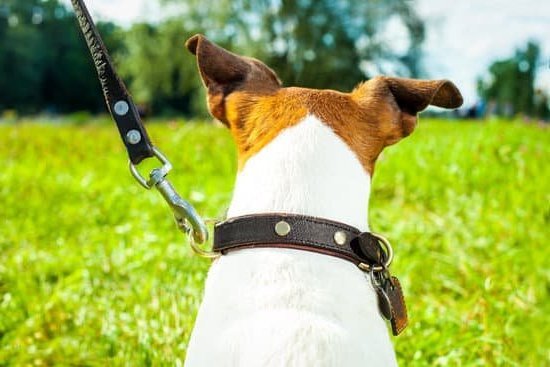Introduction
Training your dog to stay alone at home can be an important part of owning a pet. Dogs are especially prone to separation anxiety when left alone and can suffer from it if not properly acclimated. This type of training will help to ensure that your furry companion is happy, safe and comfortable being alone in the home. The following steps will provide an overview on how to train your dog to stay alone at home.
Step 1: Conditioning Time: Gradually increase the time you spend away from your dog during times when they have already proven to be relaxed and comfortable with being alone at home. Start with just five minutes away and then slowly increase the amount of time spent away each day until you can leave for longer periods without them becoming anxious or destructive. It is important that this process happens gradually so as not to frighten or stress your pet.
Step 2: Separation Rituals: Give your pup something special to keep them occupied while you are away, such as a treat-dispensing toy or chewy treat that they can enjoy while they wait for you. Establishing a regular routine each time before you leave, such as bringing out their favorite toy or offering up their last bit of praise and belly rub, will help create structure and comfort while they’re on their own.
Step 3: Safe Spaces: Create a designated area in your home that has been dedicated exclusively for your pooch. Consider outfitting this area with items that will make them feel secure such as a bed, treats, toys, water bowl and any other items that may bring joy and relaxation during their solo time inside the house.
Step 4: Crate Training: Introducing a crate is another option for training dogs who seem scared by prolonged moments spent alone. This approach is more effective when done slowly by providing tasty treats inside the crate initially then encouraging them to explore it further over time until your pet is used to spending uninterrupted hours inside its walls comfortably separating themselves from other activities going on in the house whilst you’re gone .
Preparing Your Home Environment
Before you begin training your pet dog to stay alone at home, it is important to create a safe and comfortable environment for them in your house. Pay close attention to the safety of your pup by checking if there are electrical cords that they can bite on or any objects that they can easily knock over because this type of environment is not suitable for dogs who are alone at home. If possible, use some furniture to block easy entry into any areas of the house that are unsafe or hazardous to your pup.
You should also provide an area in your home where your pup will feel comfortable and safe while they are alone. It could be purchasing new bedding, toys, or even a bed or crate specifically designed for them. The way you arrange their living space can also make a big difference in how they feel. Place the items in areas where they will have access to sunlight and air circulation so that the room is well ventilated and clean. It is also important to control noise levels by making sure no loud sounds come from outside sources such as traffic or construction noises, neighbor’s barking dogs, etc., which can cause fear and anxiety for them when left alone in the house.
Setting Up Training Guidelines & Boundaries
When teaching your dog to stay alone at home, it is important to establish training guidelines and boundaries. You should set specific and consistent rules for the behaviors you’d like for your pet to follow when left alone. For example, decide which areas of the home the pet may enter and specify what furniture they are allowed on. If there are certain items off limits, be sure to let them know. Additionally, create routines that your pet can easily memorize so they can understand how their new lifestyle will work. This could include morning and evening walktimes or meal times throughout the day. With these basic guidelines in place, it’s time to start adding in other elements of training.
To reinforce these boundaries and routines, reward desired behaviors with praise or treats; this will help your pet understand what types of behaviors you’d like them to repeat when left alone. Consistency is key – be sure to practice certain commands often so they become better acquainted with them over time. Additionally, take steps to make their isolation time more enjoyable: provide stimulating toys or activities such as kongs filled with treats for them to figure out ways to get the treat out or puzzle toys that hide some kind of reward (ex: a toy filled with treats). Doing this can build trust between owner and pet so when asked by their owner to stay alone at home in future situations, the pet will have greater confidence knowing that their needs are being considered.
Acclimating Your Dog to Solo Time
Acclimating your dog to solo time at home is an important part of owning a pet. If your dog must be left alone for long periods due to your schedule, you’ll want them to feel comfortable and content when alone for extended duration.
Here are some steps to help train your pup to stay happily occupied without its human:
1. Start small. Begin by leaving the house for short periods of time (15-30 minutes). Gradually increase over days or weeks as your pup learns that being alone isn’t scary or stressful.
2. Provide enrichment activities while away. Dogs need multi-sensory stimulation while solo in order to keep their minds busy and avoid boredom-induced destructive behavior. Give them interactive puzzle toys with treats inside, or food puzzles that take longer than a few seconds to finish off; offer objects (e.g., soft rubber toys) that can be retrieved and carried around; try podcasts specifically designed for our four-legged friends filled with sounds they might hear outside; install special loungers near windows so they have interesting sights outside and above ground level if possible.
3. Reward good behavior with treats when you return home, adding positive reinforcement and rewarding your pup for its efforts in learning how to stay home alone more comfortably – even if that means simply not having any messes waiting for you upon return!
4. Establish a good routine with walks throughout the day so that the trainee knows there will be breaks from whatever activity he/she has been doing during the day, whether it’s playing, sleeping, or just lazing about. This will give them something tangible to look forward too – not just something abstract like feeling lonely without people in the house – as well as provide more opportunities for direct positive reinforcement in the form of treats after the walk is finished! Lastly, do daily rounds with your pup inside of each room before departing so they remember what their ‘home’ looks and smells like which may add an extra layer of comfortability during those stretches when no one else is around!
Using Positive Reinforcement & Rewarding Good Behaviour
When training a dog to stay alone at home, it is important to create a positive environment free of fear and stress. Many dogs who suffer separation anxiety bark, howl, and chew while they’re left alone. Establishing good habits from early on and using positive reinforcement techniques will make all the difference.
Start by making the time apart from your dog brief and gradually increase in length over time. Initially begin by leaving them for 5 or 10 minutes and slowly build up to one hour or so. Make sure you do not have any eye contact or physical contact as you leave during these initial training sessions. Don’t say goodbye or interact with them – instead, offer lots of verbal praise for calm behaviour before quietly exiting without direct interaction.
When your dog behaves calmly during their time alone, reward this behaviour with treats or positive words. This is a key part of the training process that ensures your dog remains relaxed when left home alone in the future. You should also prepare the house with appropriate toys and distractions in advance, such as food puzzles filled with tasty goodies that can challenge your canine companion while they wait it out until you return. Try to remove any items they may chew on in your absence such as pillows, blankets and other household objects that could be damaged as this will only add to their anxiety while away from you – another reason why providing distraction toys beforehand is essential!
Finally, pair coming back into the house with more positive reinforcement cues like praise or physical attention – the goal is for your dog to know that being alone results in good things happening! With patience and consistency in training, your pet will learn that spending some time apart from his humans doesn’t have to be daunting; rather it can be an enjoyable experience with lasting rewards!
Common Challenges & Solutions for Home Alone Dogs
One of the biggest challenges many dog owners face is teaching their pet how to stay alone at home. Many dogs become anxious when left alone, and that anxiety can result in destructive behaviors, excessive barking, and property damage. However, it is possible to train a dog to feel comfortable staying home by themselves.
Some common solutions for helping your dog adjust to being alone include introducing the idea gradually over time. Start by leaving your pet in short intervals and gradually increase the length over several weeks. Also be sure to provide your dog with plenty of enrichment while they are alone such as stimulating toys, interactive food puzzles, or a computerized treat dispenser. During long absences from home leave calming music on for your dog or even a TV show playing quietly in the background. If possible have someone check in with them during the day for a walk or quick visit which will help reassure them that you have not forgotten them! Additionally using natural remedies such as herbs or pheromones like Adaptil or Feliway may help your pet find comfort during times of stress and separation anxiety. If you find that none of these solutions are helping then consider seeking out professional help from a qualified animal behaviorist who can provide more intensive training methods tailored specifically to your dog’s needs.
Shaping Your Dog’s Routine
The next step in training your dog to stay alone at home is to work on socialization and forming a routine. This can start even before you bring your pup home, or when they’re as young as 8 weeks old. It’s important to expose them early on to different people, animals, surroundings and environments in order for them to feel more comfortable and less anxious about being away from you later on.
Once the puppy has had all necessary vaccinations and it’s safe for them to be out in public, attend puppy classes or enroll in an obedience school if possible. This will not only be helpful for their overall development but also for further establishing a routine that becomes familiar and less worrisome for them when it comes time for you to leave.
Throughout the day try introducing your pup to gentle play activities where they learn behaviors such as patience, self-control and impulse control. This will help teach them how to manage their emotions better when they’re alone so they don’t panic or become agitated while you’re away. Reward based training is also an effective way of teaching these skills; look into reward systems like treats given intermittently throughout the day or interactive puzzle toys that are both mentally stimulating and rewarding.
Finally, give yourself weaning periods by setting small goals with smaller duration goals at first; try leaving your pet alone in short increments like 15 minutes within range of your home before expanding on these times incrementally over a period of months until they’re able to cope with longer periods of time being left at home while you’re away.
Conclusion
Training your dog to stay alone at home is a great way to ensure that they are doing alright while you are out. Having a pet can be difficult in the beginning and it is especially important to make sure the animal feels comfortable while home alone. Training your dog to stay home alone allows them to learn how to navigate their environment in a safe, secure, and beneficial way.
Furthermore, having your dog trained to stay alone at home increases safety in general for both you and your pet. As they feel comfortable being left alone, there is less potential for them getting into trouble like chewing on furniture or going outside without permission. This eliminates potential risks of injury for your pet as well as others when returned outdoors. Lastly, training them in this manner takes away some of the anxiety that animals may have when their owners are not around. This can help keep them from feeling threatened or insecure while home alone.
Overall, training your dog to stay at home alone can provide numerous benefits that go far beyond simply saving your furniture or keeping the house clean when you’re not there. It gives them the opportunity to learn proper behavior during times spent unaccompanied which improves their mental and physical health overall. More importantly, it reinforces trust and companionship that serves as an integral part of any relationship between an animal and their furry friend forever!

Welcome to the blog! I am a professional dog trainer and have been working with dogs for many years. In this blog, I will be discussing various topics related to dog training, including tips, tricks, and advice. I hope you find this information helpful and informative. Thanks for reading!





